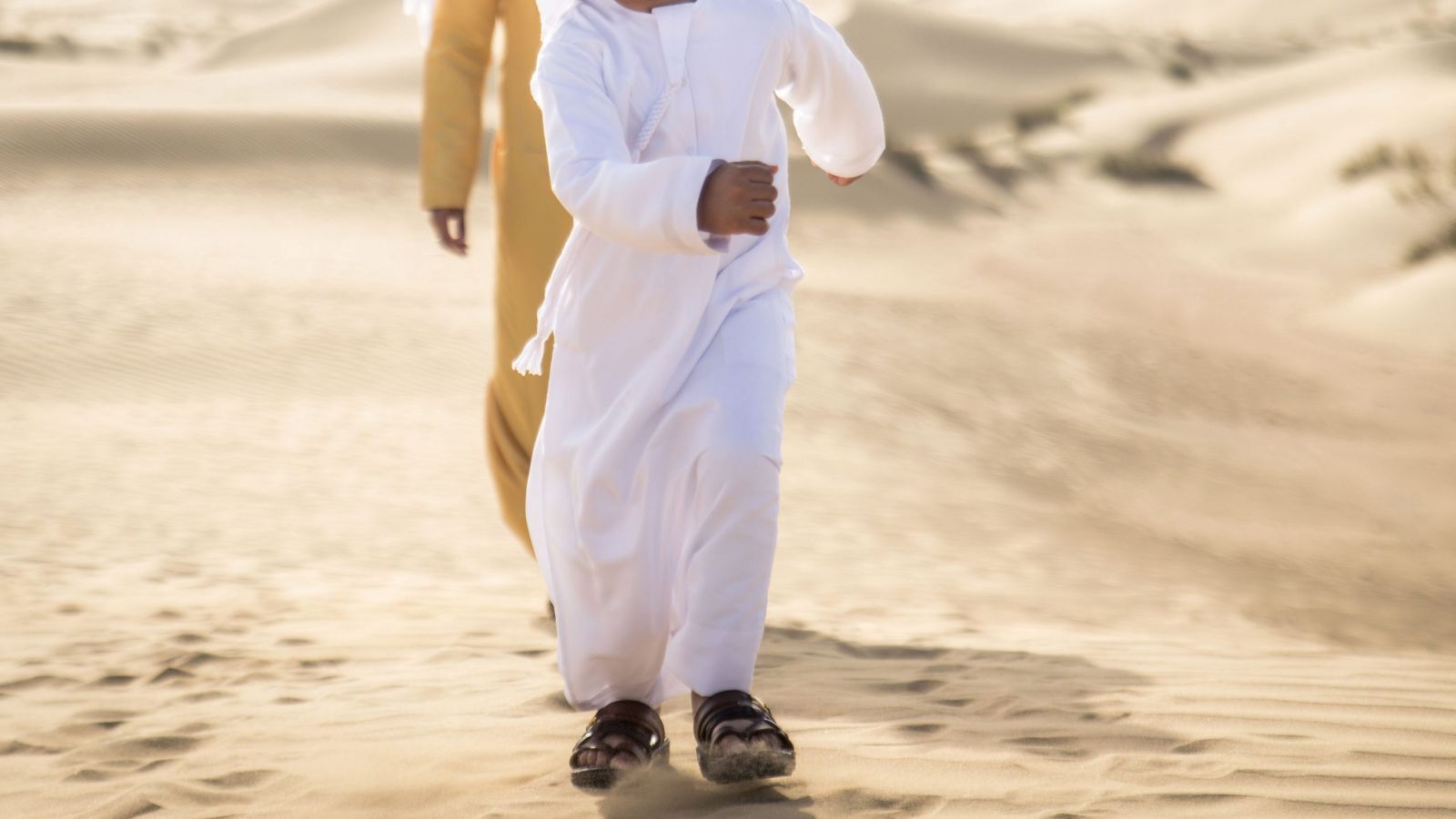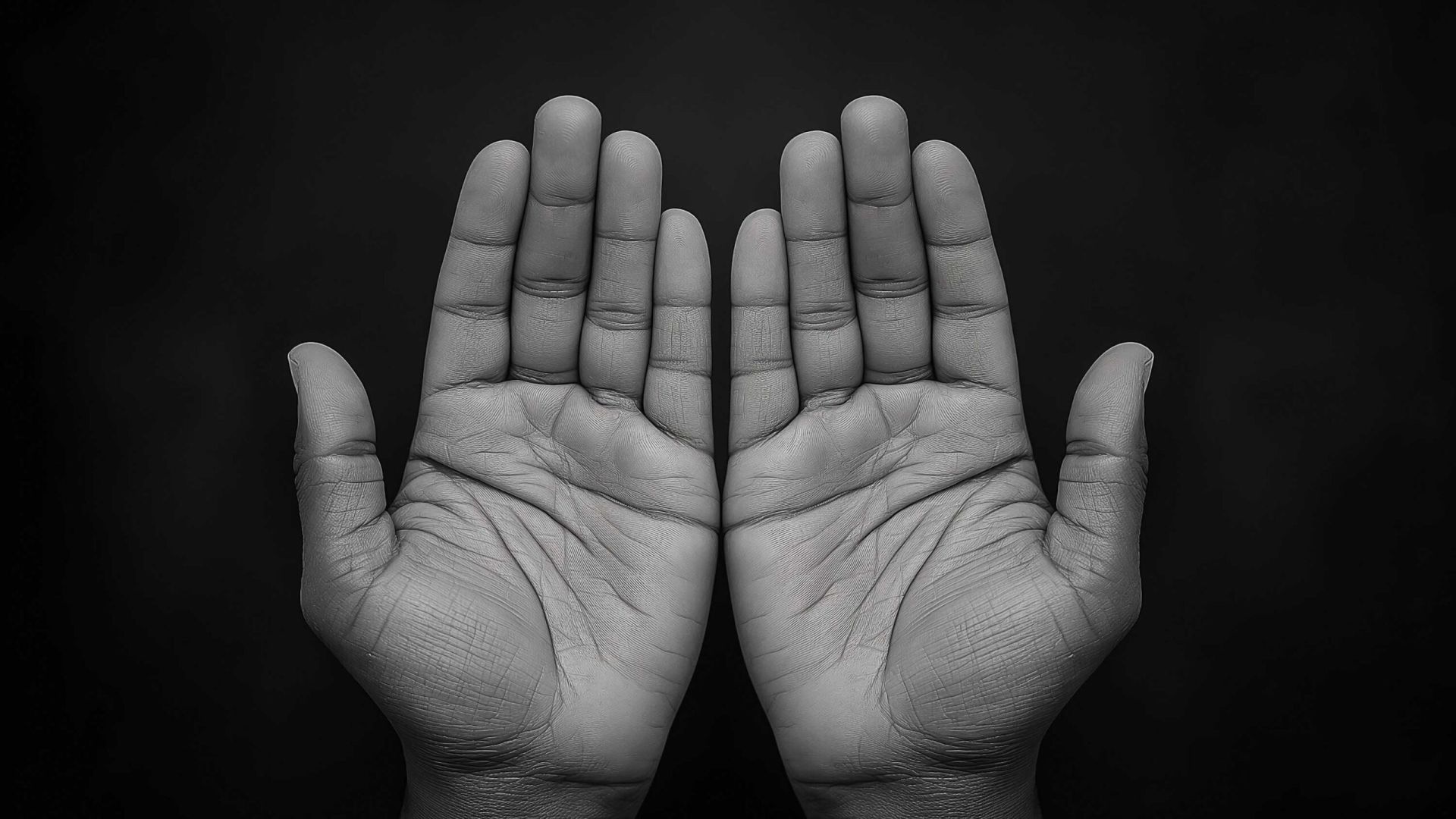Jilbāb Starts From the Head Not the Shoulders
Shaykh Ḥasan al-Ṣumālī

How is the Jilbāb really meant to be worn? What is the true Hijāb?
Umm Salamah narrated:
When the verse, “That they should draw their jalabib close around them” was revealed, the women of Anṣar came out as if they had crows over their heads by wearing jalabib.”
Sunan Abū Dāwūd Book 32 #4090.
Transcription:
The companions, when they met one another they would not depart until they had recited, “Wal ʿAṣr,” وَالْعَصْر – (Sūrah ʿAṣr Chapter 103). We advise one another, if we see someone is doing something openly if they’re openly falling into Tabarrūj, it’s blatant it’s not something hidden, then we advise one another for the sake of Allāh Subhānahu wa taʿālá. After we have offered and given a general definition and description of Al-Tabarrūj, it should be obvious and evident that the following are specific examples of Al-Tabarrūj.
Sisters, the reason why we are mentioning this so that we can learn, so that we can benefit, so that we can implement the truth in our lives, so that we can dress as Allāh ʿAzza wa jal commanded us to dress, so that we can stay away from things that anger Allāh Subhānahu wa taʿālá.
The first example of Al-Tabarrūj – it is a form of Tabarrūj if the Jilbāb does not cover and conceal the whole of the woman’s body. It is a form of Al-Tabarrūj if the Jilbāb does not conceal and cover the whole of the woman’s body! For the third time; and I hope that your hearts are open as well as your ears because some people listen but they do not absorb with their heart.
One of the forms of Al-Tabarrūj is if the Jilbāb does not cover the whole of the woman’s body! Like if the Jilbāb it came from the woman’s shoulder! That is a form of Tabarrūj! If the Jilbāb it comes from the shoulder that is a form of Tabarrūj! Again! If the Jilbāb it comes from the shoulder and not from the head that is a form of Tabarrūj!
Why is it Tabarrūj? Because, if the Jilbāb comes from the shoulder then it contradicts the word `Ala – `Ala means that something start from the highest point that we find in the saying of Allāh ʿAzza wa jal:
يُدْنِينَ عَلَيْهِنَّ مِن جَلَابِيبِهِن
“…And the women they should draw their cloaks over their whole body…”
[Ahzāb, 33:59]
ʿAlayhīnna! So `Ala here, it means that the Jilbāb it should come from the highest point of the woman! The highest point of the woman is the head! The shoulder’s of the woman is not the highest point of the woman! That is why when the woman she wears the Jilbāb from the shoulders it will reveal the shape of the body! Whereas the legislated Jilbāb that starts from the head, it will conceal all of her body from the head to the chest, and that which is below it because it has come from the head. So sisters, those who are wearing the Jilbāb from the shoulder what is known as the shoulder `Abaya (a long garment that starts from the shoulders) then this is a form of Tabarrūj. And this is an opposition to the saying of Allāh ʿAzza wa jal; “…That they should draw their cloaks all over their body…” From the top of the body because `Ala means they start from the highest point.
I hope that this is clear as the sun and the sky, because the Prophet ﷺ he said: “I left you upon clear guidance, its night is like its day no one deviates it from except that they are destroyed…”1 Sisters it’s time! It is time, it is time that you understand the meaning of Al-Tabarrūj that you advise those individuals that are falling into Al-Tabarrūj, that we learn and we teach our children the meaning of Al-Tabarrūj.
The second type of Al-Tabarrūj, it is a form of Tabarrūj if the Jilbāb comprises of two separate pieces, a piece that covers the top of the body, and a piece that covers the bottom of the body, like somebody wearing a long skirt and a shirt and covering her hair, that is Tabarrūj! That is Tabarrūj! And the Shaykh he mentioned; Because this is in contraḍīction to what we have mentioned from the Scholars of Islām that the Jilbāb is one piece, that covers the whole body. “And the Shaykh he said; “The wisdom behind preventing this type of garment is to prevent people from playing with this noble dress, and we see this wisdom becoming clearly evident in the latter decades.” Because when it was said to the women that there is no specific dress that you have to wear, but the most important thing is that you have to cover your body everyone understood this how they wanted to understand it and that is why various types of what they referred to as Jilbāb have appeared. Some of them wear jeans and a scarf and they say that’s a Jilbāb. Some of them have something covering their hair and the shoulder `Aba’ah and part of their hair out and they say it’s Jilbāb.
The third type of Al-Tabarrūj, and the brother he covered in this lecture previously but In shā Allāhu taʿālá the reminder benefits the believer. And the Prophet ﷺ when he was teaching his companions sometimes he would repeat something, he would repeat a specific point so that it could be understood clearly. It is a form of Tabarrūj if the Jilbāb is considered to be Zina, beauty and the adornment in itself it is Tabarrūj, na’am. Those people that are wearing fish stockings for people to see that is Tabarrūj! Those people that are wearing diamonds and rhinestones upon their over garment, that is Tabarrūj! Those people that have ruffles that have the audacity to have ruffles on the back of their over garment like they’re going to a ball that is Tabarrūj! That is Tabarrūj sisters! The wisdom behind the Jilbāb being legislated is for the woman to cover her beauty and her adornment from the men who are strangers as Allāh ʿAzza wa jal, He said:
وَلَا يُبْدِينَ زِينَتَهُن
“And the believing women they should not expose and reveal their adornment and their beauty.”
[al-Nūr, 24:31]
Because we said earlier whether this is their natural beauty or whether this is something extra like jewellery, or something that they put up on their clothing. And it is a amazing it is amazing some of the women, the women they know this! They know that the Jilbāb should not be! Should not be! A source of beauty! The Jilbāb they know it should not be an adornment in itself! However they intentionally wear the Jilbāb that has been decorated with embroidery that will attract the attention of men! It is amazing! It is absolutely amazing! It is absolutely amazing that maybe one of the women you find she wears a badge on her Khimār, she wears a badge on her Khimār or she wears a flower upon her Khimār, on her head! Or she wears some type of jewellery on her head over the Jilbāb and the Shaykh he said; “Some of them they wear different colours where it’s a ribbon or a flower, or whether it’s a badge on top of their Jilbāb on their head like the comb of a rooster!” Like the comb of a rooster! This is by the strange affairs by Allāh! And this shows that the woman that wears this type of things the woman who wears these types of things she does not understand the purpose of the Jilbāb. She does not understand the purpose of the Jilbāb! Or that she is playing games with her religion, and may Allāh protect any of the sisters from falling into this.
Even though Allāh ʿAzza wa jal Has commanded the woman to remain in her house so that she can be more concealed by the eyes of the men as Allāh ʿAzza wa jal He said:
وَقَرْنَ فِي بُيُوتِكُن
“And remain in your houses.”
(Ahzāb, 33:33)
It is understood from this clear text that the more the woman reveals her adornment and her beauty to strangers then she is further from fulfilling the requirements of the Jilbāb and closer to Tabarrūj. SubhānaAllāh.
Sisters, it is Tabarrūj if the Jilbāb is itself adornment, stay away from those Jilbāb’s that have “Muslim” written on the front of it. Stay away from those Jilbāb’s that have “Niqābi” written on the front of it. Stay away from those Jilbāb’s that have embroidery all up and down the arm. Stay away from those Jilbābs that show the Jilbābs, stay far away from them!
1 Reported by Aḥmad (4/126), Ibn Mājah (no.43), al-Ḥākim (1/96) and others by way of Abdur-Raḥmān ibn Amr as-Sulāmee and the ḥadīth is Ḥasan.
Transcribed and footnote added by Umm Safurā Al Salafīyyah b. As-Sa’adiyyah إقرا بنت العجاز












